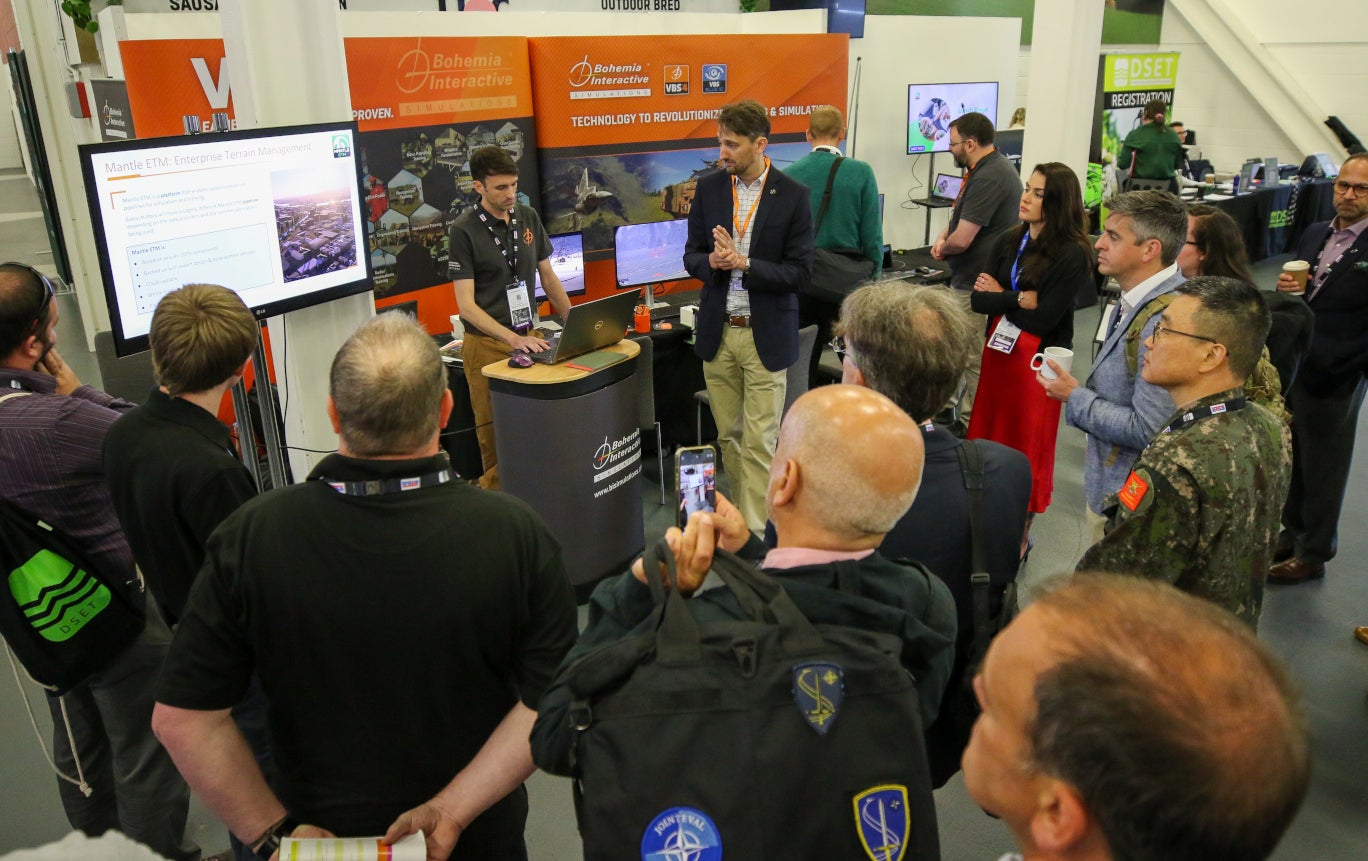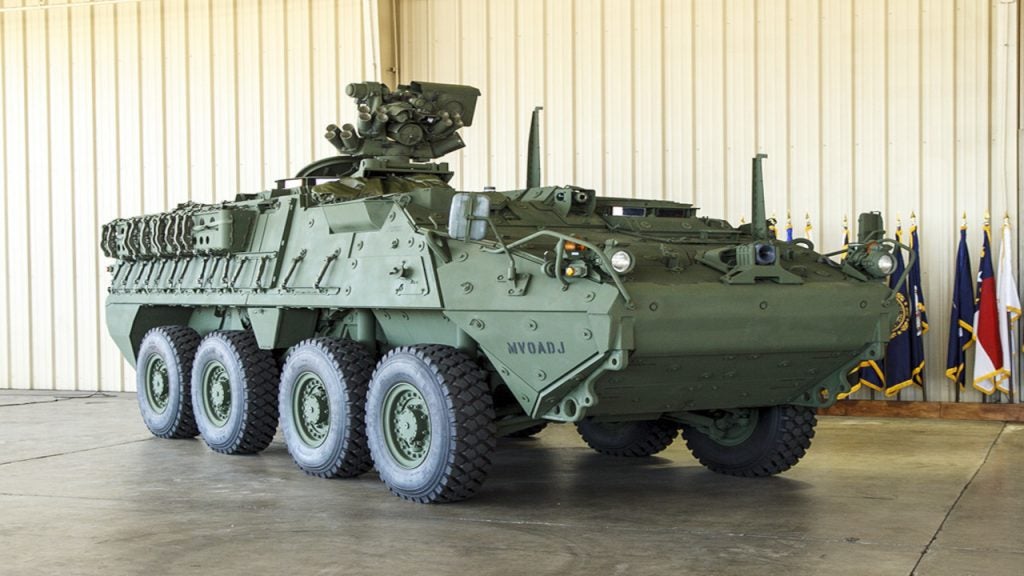
In an exclusive interview with Harry McNeil, Oli Arup, Chief Product Officer at Bohemia Interactive Simulations (BISim), provides insights into the integration of BISim’s technology components to deliver a superior workflow in training and simulation.
In this interview, Oli Arup, the Chief Product Officer at BISim, sheds light on how their various components, including VBS4, VBS Blue IG, and Mantle ETM, are integrated to provide a workflow for tactical training, experimentation, and mission rehearsal.
Arup emphasises the user-driven nature of BISim’s products, empowering soldiers to create their own training scenarios and integrate them with external tools. He also discusses the role of VBS4 as a virtual desktop training and simulation host and highlights the latest features introduced in VBS4 23.1.
Furthermore, Arup delves into the significance of Mantle ETM in enhancing the storage, enhancement, and correlation of 3D Tiles, Unreal, and VBS formats. The interview concludes with insights into BISim’s recent integration with Blackshark.ai and the implications for the military Metaverse.
Harry McNeil (HM): Can you provide an overview of the technology portfolio BISim offers and how the different components are integrated to provide a superior workflow?
Oli Arup (OA): Our desktop training suite, VBS4, offers a comprehensive simulation experience that covers everything from the ground to space. With dismounted, vehicle, and aircraft training available, along with everything in between, it’s a complete suite of training programs. VBS4 is a user-driven tool that soldiers can easily use to create their own training scenarios. You can also integrate external tools into it.
We have Leopard tank grips integrated with VBS4 for gunnery training on the show floor, but VBS4 is most commonly used in a classroom setting as a desktop trainer. Commonly these military training classrooms are more than 50 PCs available for squad/section, platoon, or brigade training of different kinds.
The UK MoD utilizes the DVS2 contract to implement VBS4 and VBS Blue IG. The VBS Blue IG is an image generator using the same graphical engine as VBS4, but it has no native simulation capability. Instead, an external simulation host must drive it. VBS4 can be used as such as simulation host or any other external host simulation using CIGI can also be used to drive VBS Blue IG.
We also offer terrain products, including our mantle ETM product. This terrain pipeline is custom-built for organizations, governments, and industries and leverages the expertise of TerraSim (a BISim-owned company). Mantle ETM allows you to import data of any type and automatically produce terrain formats, ensuring it’s all correlated and outputted into multiple runtimes.
Imagine you have your satellite systems and data sources. You import that data into Mantle ETM, then automatically convert, conflate and correlate it, outputting into multiple runtimes.
HM: What is the role of VBS4, and how does it support tactical training, experimentation, and mission rehearsal?
OA: This training sandbox is an incredibly versatile tool that soldiers can use for a wide range of purposes, from operational analysis to virtual reality training and everything in between. The breadth of capability in VBS4 supports tactical training experimentation and mission rehearsal. It’s up to the users to drive its application and maximize its capabilities. We’ve seen it employed for recognition training, convoy training, and even UAV operations. The soldiers do quite a lot of the work to implement their scenarios and deliver training rapidly as new use cases emerge. Overall, it’s an excellent resource for anyone looking to improve their skills and prepare for real-world situations.
HM: Can you provide an overview of BISim’s flagship product, VBS4 23.1, and its latest features?
OA: As I mentioned earlier, our simulation system, VBS4, has undergone a significant update in version 23.1. We’ve incorporated several new features, including radio antennas to boost VBS Radio transmissions. This feature lets you establish a communication network and visualize the extent of your comms once you’ve included an antenna or booster within your scenario. We’ve also added a counter-battery sensor, which emulates a counter-battery radar, or LCMR. An administrator can attach it to any entity in a given scenario and configure it for accuracy and speed of response. It can track any munitions fired through the scenario and send fire event warnings and reports to trainees.
Furthermore, we’ve included several impressive visual features, such as our new damage charring system, which automatically applies scorch marks from explosive rounds to any model or entity within the environment. These charring effects are visual and thermal, providing a thermal impact visible to thermal imaging sensors when applied to a vehicle. These are just a few of the main new features which also includes over 450 new models and some significant rendering improvements.
HM: How does BISim’s simulation terrain platform, Mantle ETM, enhance the storage, enhancement, and correlation of 3D Tiles, Unreal, and VBS formats?
OA: When it comes to solving the terrain problem, one of the biggest challenges has always been figuring out how to interpret and draw the terrain consistently across different simulators. For instance, if you’re working with procedural data for trees, you might encounter issues where one runtime requires you to define individual tree positions. At the same time, another needs to know that there are trees in a particular area.
This situation can pose a real headache, but that’s where Mantle ETM comes in. Mantle ETM includes a robust pipeline that automatically determines which output should go to which runtime. It will even convert the data to ensure that everything is perfectly correlated. You can stop worrying about whether your data is consistent and focus on processing everything on the server side.
HM: Could you explain the recent integration between BISim and Blackshark.ai?
OA: BlackShark.ai has developed exceptional terrain technology, demonstrated by its role as a terrain provider for Microsoft Flight Simulator. Our agreement with BlackShark.ai allows BISim to resell this impressive terrain data to our customers. In practical terms, if you approach us with a desire to model a specific area, we can provide you with direct access to the high-quality BlackShark.ai data. Our relationship enables us to offer readily available terrain data as a component of our VBS or VBS Blue IG training solutions directly to customers.
HM: What implications does it also have for the military Metaverse?
As technology advances, so does our approach to creating virtual worlds. The concept of a “Metaverse” confuses many people and sometimes hinders the design and development process. When replicating real-world terrain, the term typically refers to a one-to-one copy. Thanks to AI processing, we can now simulate extracted features like buildings, roads and trees, translating them into 3D data. This capability reduces guesswork and accelerates turnaround times more efficiently than manually drawing buildings from satellite images, as was done in the past. AI systems are truly revolutionizing terrain classification and generation.
HM: I will discuss your VBS full bundle, what premium features are included, and how they expanded VBS4 capabilities.
The bundle is an excellent addition to the baseline products, combining various features. One of its best features gives you access to Microsoft Bing data, a fantastic mapping tool. With a bundle, you can easily add Microsoft Bing data to the VBS4 base terrain by downloading a free API key and adding it to a VBS4 runtime. Once you start VBS4, you can access Microsoft’s data for 3D cities and satellite imagery.
Another great feature is the radio pro which offers multiple channels and infinite configuration. While the standard option has a radio option, also, you can’t access multiple channels. Radio Pro gives you the ability to do degradation via distance and weather, which is incredibly helpful.
We added VBS CAS to the bundle, allowing you to execute fairly complex, close air support, like controlling aircraft, weapons drop-off, flight time and more. It’s simple to use and allows you to coordinate multiple aircraft with the minimum burden on administrators.
Lastly, the Bundle enables a VBS Plan overlay-sharing feature enabling you to share overlays with multiple players. This feature is beneficial if you have 50 trainees in a room and need to share individual layers. Overall, the bundle is a must-have for anyone who wants to take their VBS experience to the next level.
HM: How does BISim ensure the quality of their simulation products and technology, and what professional services are available to support customers?
Our team dedicates itself to improving the user experience. We prioritize spending time with customers, visiting their locations and observing their operations. We value our community of users and often seek their feedback to improve our products. Our goal is always to provide value through practical, effective training. We designed simulation as a tool to supplement live training, not replace it entirely, so we focus on maximizing its benefits to enhance training outcomes. We take great care in listening to our customers and using their feedback to drive success.
HM: How does BISim prioritise innovation, disruption, and humility in its approach to developing training and simulation software products?
As someone responsible for balancing a company’s internal investments with its commercial contracts, I know the challenges. On the one hand, we’re investing heavily in technologies our customers may not directly request but will support their long-term goals. On the other hand, we have customers who need something delivered tomorrow. It’s my job to ensure that we’re delivering what they need while staying on track with our roadmap for the future. It’s a delicate balancing act that I take very seriously. We always strive to maintain our disruptive nature while maintaining humbleness and always remembering who we are working for, our customers.








